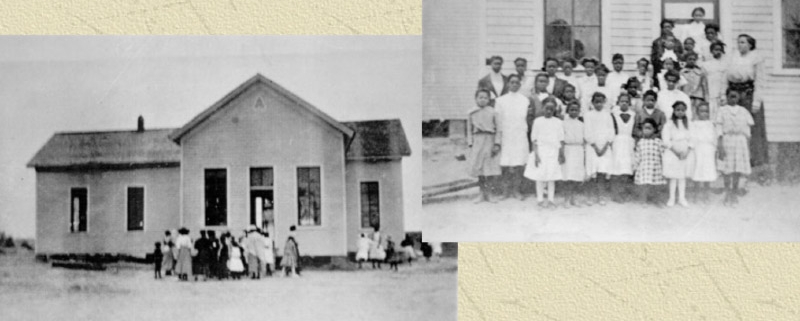Cary’s Heritage: The Cary Colored School
Cary, NC – In 1893, the two-room segregated Cary Colored School opened off of Shirley Drive behind what is today Cary Elementary School. In 1900, Dr. Rev. Meadows became the principal and one teacher, and Ada Ruffin was the second teacher for grades 1-6. When students graduated from the 6th grade, they were bused to Berry O’Kelly segregated High School in Method, a suburb of Raleigh.
In 1936, the Cary Colored School was burned down. Folks told us about the school and its two teachers.
Jimmy Gibbs
My great-grandfather, John William Meadows, was one of the most prominent people in Cary at the turn of the twentieth century and beyond. He was born in Granville County in the 1800s, but his birthdate is unknown. He spent most of his life in Cary. He went to college, completed his masters and doctorate in theology, and then spent his dual careers as a full-time educator and a full-time minister. He was probably in his mid-twenties when he began teaching at the Cary Colored School in 1900 and continued for the next 35 years, then he retired in his sixties.
He was a leader in the Christian church and Lincoln Conference as well. When not teaching, he was traveling around preaching at many of the churches in the Lincoln Conference including in Cary, where he had his home base. His house was right around the corner and up the street from the school. He died in 1954.
Robert Heater
The black elementary school off Kildare Farm Road was right behind the first house on Shirley Drive. Down what looked like an old driveway was the road that lead to the black Christian church and elementary school.
The Cary Colored School was a wood-frame building, and it had a little pot-bellied stove in it. I have never been inside it, but I heard about it from folks who went to school there.

Clyde Evans
The Cary Colored School had two rooms. Reverend Meadows and Ms. Ada Ruffin were my teachers. The preacher of the church next door was also the teacher. He married me.
Sallie Jones
The Cary Colored School burned down the year that I would have been in the sixth grade. To get to school, we would walk down Dry Avenue past the white elementary school [now Cary Arts Center]. There would often be white boys there and as we would go through in the morning, sometimes they would throw rocks at us and call us names.
Our church was right next door to the school. It did not burn down as well in the school fire, but the church was often vandalized, like water poured into the piano or windows broken. Rev. Meadows was the preacher there as well as our teacher. In the 1960s, the church finally sold their land, tore down the old church and built a new one on Evans Road, which is now the Cary First Christian Church.
Elva Templeton
Ada Ruffin was one of the teachers. She was a very fine person. She lived with her mother, Aunt Millie, a good old soul.
We called the older black people aunts and uncles out of respect for them. We didn’t dare call them anything else.
Story by Peggy Van Scoyoc. Photos courtesy of the Page-Walker Arts & History Center. Much of Cary’s Heritage is taken from the book, Desegregating Cary, published in February, 2010. The book is a collection of oral history interviews conducted between local citizens and Friends of the Page-Walker Hotel. The rest comes from later oral history interviews with local citizens.




Thank you yet again, Peggy, for chronicling Cary’s history.
Thank you for sharing this historical information from Cary, Peggy Van Scoyoc. Great to see how far, Cary has come and how much farther it will prosper. This could be curriculum conversation, which is so important to our city and national dialogue.
Very interesting.
Tad
Thank you for sharing these tidbits from Cary’s history.